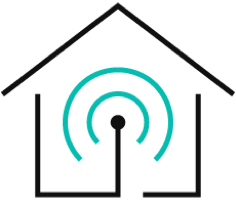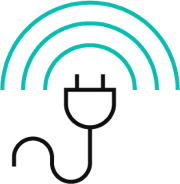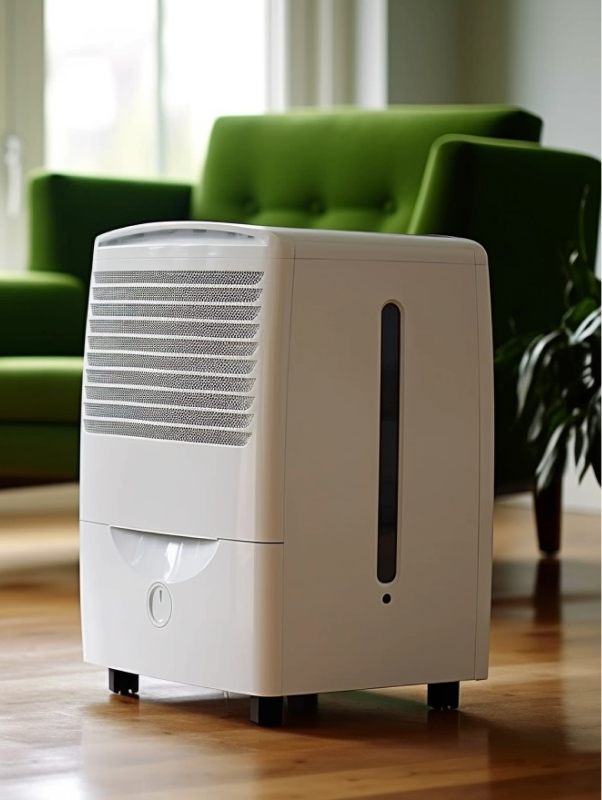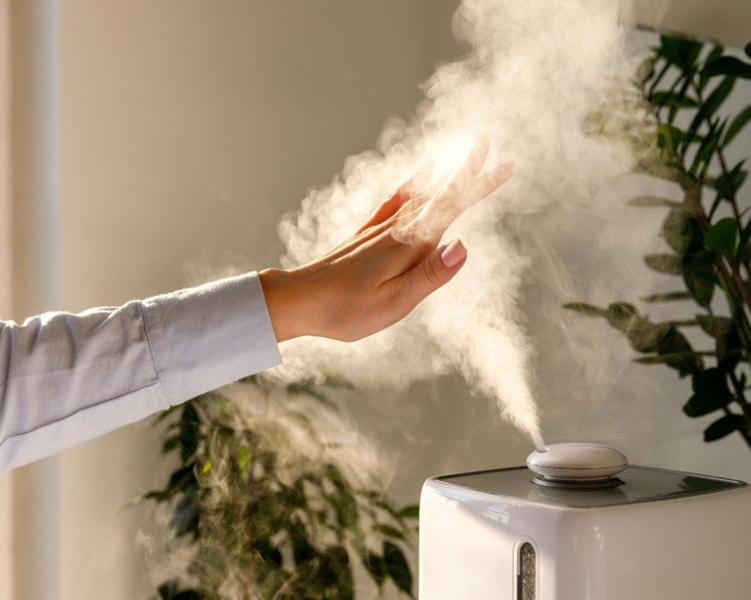Imagine stepping into your home after a long, humid day. As you enter, you're hit by a wave of moisture-laden air that clings to your skin, making you feel uncomfortable and sweaty. Excessive humidity, like this, not only affects your comfort but can also lead to issues like mold growth, musty odors, and damage to your belongings. However, there's a simple solution that can help you reclaim control over the humidity levels in your home while saving energy and reducing your environmental impact. And that’s dehumidifiers.
And today, we will delve into the world of energy-efficient dehumidifiers and explore how they can revolutionize your indoor environment. We'll uncover the key features and benefits of these modern marvels, shedding light on their ability to improve air quality, enhance energy efficiency, and save you money on your utility bills.
- Which Type Of Dehumidifier Is Most Energy-Efficient
- Does a Dehumidifier Use a Lot of Energy?
- How To Save Energy When Using A Dehumidifier?
- EVVR Energy Monitoring Smart Plug&Relay - Transform Your Efficient Smart Dehumidifier
Which Type Of Dehumidifier Is Most Energy-Efficient
The most energy-efficient type of dehumidifier is the desiccant dehumidifier. Unlike compressor dehumidifiers, desiccant dehumidifiers use a moisture-absorbing material to extract moisture from the air, resulting in lower energy consumption. They are especially effective in colder temperatures, making them a great choice for energy-efficient dehumidification. When choosing an energy-efficient dehumidifier, consider factors such as size, capacity, and energy efficiency ratings like Energy Star certification. In this blog, we'll explore additional features and considerations to help you maximize energy savings and achieve a comfortable, humidity-free home.
Does a Dehumidifier Use a Lot of Energy?
The energy consumption of a compressor dehumidifier can range from around 300 to 700 watts per hour of operation, depending on the model and settings.
The energy consumption of a dehumidifier can vary depending on several factors, including the type, size, capacity, and usage patterns. However, compared to other household appliances, dehumidifiers generally consume a moderate amount of energy. Compressor-based dehumidifiers, which are the most common type, use a refrigeration system to remove moisture from the air. These units require energy to power the compressor, fans, and other internal components. On the other hand, desiccant dehumidifiers, as mentioned earlier, are known for their energy efficiency.

How To Save Energy When Using A Dehumidifier?
When using a dehumidifier, there are several strategies you can employ to save energy and optimize its efficiency. By implementing these energy-saving practices, you can effectively manage humidity levels in your home while minimizing the overall energy consumption of your dehumidifier.
Here are some tips to help you save energy when using a dehumidifier:
Pick the Right-Size
Choose an appropriately sized dehumidifier for your space. Dehumidifier power consumption varies based on its size. An oversized unit will consume more energy than necessary, while an undersized unit may struggle to effectively dehumidify the area. Refer to the manufacturer's guidelines or consult with an expert to determine the right capacity for your specific needs. Dehumidifiers typically have specified coverage areas and power requirements tailored to their design. It is important to choose a dehumidifier that matches the size of your home.
For example, if you have a tiny studio apartment, choose a compact dehumidifier suitable for areas up to 500 square feet for minimum dehumidifier energy use. For larger homes or basements, opt for a more powerful dehumidifier designed for 1500 square feet or more. Matching the dehumidifier to your home size ensures efficient performance while minimizing energy consumption.
Go for the More Energy-Efficient Models
Look for the most energy efficient dehumidifier with energy-saving features and certifications. Energy Star-rated dehumidifiers are tested and verified to meet specific energy efficiency standards. These models often incorporate advanced technologies, such as programmable timers, auto-shutoff, and smart sensors, to optimize energy usage.

Optimal Placement
Position the dehumidifier in the areas of your home where humidity issues are most prevalent. Here are some of the areas you should consider:
- Basements: Position the dehumidifier in the basement, as this area tends to have higher humidity levels.
- Laundry rooms: Place the dehumidifier in or near the laundry room, where moisture from drying clothes can contribute to increased humidity.
- Bathrooms: Consider placing a smaller dehumidifier in bathrooms to combat moisture buildup from showers and baths.
- Crawl spaces: Install a dehumidifier in crawl spaces to prevent excessive moisture that can lead to mold and structural issues.
- High-humidity areas: Identify any specific areas in your home where humidity is consistently high, such as storage rooms or closets, and position the dehumidifier accordingly.
Placing the dehumidifier correctly also reduces the possibility of over-dehumidification. Over-dehumidification can occur when a dehumidifier is placed in a large, open area or a space with low humidity levels. This can lead to excessive moisture removal, which not only wastes energy but can also cause discomfort due to overly dry conditions. Placing the dehumidifier in areas with higher humidity levels ensures that it operates efficiently without unnecessarily drying out the entire home.
Regular Maintenance
Keep your dehumidifier clean and well-maintained to ensure optimal performance. Clean or replace the air filters as recommended by the manufacturer to prevent clogs and maintain proper airflow. A well-maintained dehumidifier operates more efficiently and consumes less energy.
Set Optimal Humidity Levels
Determine the ideal humidity range for your comfort and health, typically between 40% and 50%. Adjust the settings on your energy efficient dehumidifier accordingly. Avoid setting the humidity level too low, as it will unnecessarily increase energy consumption. Most dehumidifiers allow you to set the desired humidity level manually or offer built-in humidity control features.
Effective Usage Schedule
Create a usage schedule that aligns with your specific needs. If certain areas of your home require dehumidification only during certain times of the day, program your dehumidifier to operate accordingly. In this particular case, you can take the help of EVVR’s Energy Monitoring Smart Plug. With programmable scheduling, you can set specific times for the dehumidifier to operate during off-peak hours, taking advantage of lower energy demand. Remote control capabilities allow you to turn the dehumidifier on or off from anywhere, ensuring it runs only when needed.
Leverage Natural Ventilation
Take advantage of natural airflow and ventilation when possible. Open windows or use fans to promote air circulation, especially during drier and less humid periods. This can help reduce the workload on your dehumidifier and save energy.
Insulate and Seal
Improve the insulation and sealing of your home to minimize air leakage and prevent moisture infiltration. Well-insulated spaces are less prone to excessive humidity, reducing the reliance on dehumidifiers. Proper insulation also helps maintain consistent indoor temperatures, indirectly contributing to energy savings.
By implementing these energy-saving practices, you can effectively manage humidity levels in your home while optimizing the efficiency of your dehumidifier. Remember to consult the user manual or reach out to the manufacturer for specific instructions and recommendations for your particular dehumidifier model.
EVVR Energy Monitoring Smart Plug&Relay - Transform Your Efficient Smart Dehumidifier
Here's how EVVR energy monitoring smart plug can transform your dehumidifier experience:
Remote control convenience
With the EVVR Smart Plug, you can control your dehumidifier remotely using the EVVR App or Apple HomeKit. This means you can turn it on or off, adjust settings, or monitor its operation from anywhere, providing the utmost convenience and flexibility.
Energy Monitoring Insights
The energy monitoring feature of the EVVR Energy Monitoring Smart Plug allows you to track the energy consumption of your dehumidifier in real-time. You can view hourly energy data and gain insights into its power usage patterns. This information empowers you to make informed decisions about energy management, optimize usage, and potentially reduce electricity costs.
Automation and Scheduling
The EVVR Energy Monitoring Smart Plug enables automation and scheduling for your dehumidifier. You can create customized schedules to automatically turn the dehumidifier on or off at specific times, tailored to your preferences and lifestyle. This automation ensures that your dehumidifier operates efficiently when needed and conserves energy when not in use.
Integration with Other Smart Devices
The Smart Plug is compatible with Apple HomeKit, allowing seamless integration with other smart devices in your home ecosystem. You can create scenes and automation routines that involve your dehumidifier along with other connected devices. For example, you can set up a scene where the dehumidifier turns on when a specific sensor detects high humidity levels.
Improved Usability and Control
The EVVR Energy Monitoring Smart Plug simplifies the operation of your dehumidifier. With the EVVR App or voice commands via Apple HomeKit, you have easy and intuitive control over your dehumidifier's settings, power status, and energy monitoring. This transforms the usability of your dehumidifier, making it more convenient and user-friendly.
Integrating the EVVR Energy Monitoring Smart Plug into your dehumidifier setup unlocks a world of advanced control, energy monitoring, and automation features. This powerful combination enhances usability, maximizes energy efficiency, and delivers a personalized and effortless dehumidification experience.
Final Thoughts
In a world where excessive humidity dampens our comfort and drains our energy, the quest for a more efficient and sustainable solution has led us to the realm of energy-efficient dehumidifiers. These devices not only combat excessive moisture but also offer a path toward energy savings and environmental consciousness.
These appliances not only improve air quality and prevent issues like mold growth but also contribute to lower utility bills and a more sustainable lifestyle. So, whether you reside in a humid region or experience seasonal humidity fluctuations, embracing energy-efficient dehumidifiers can bring comfort, cost savings, and environmental benefits to your home. Contact us now for personalized assistance and recommendations.
















